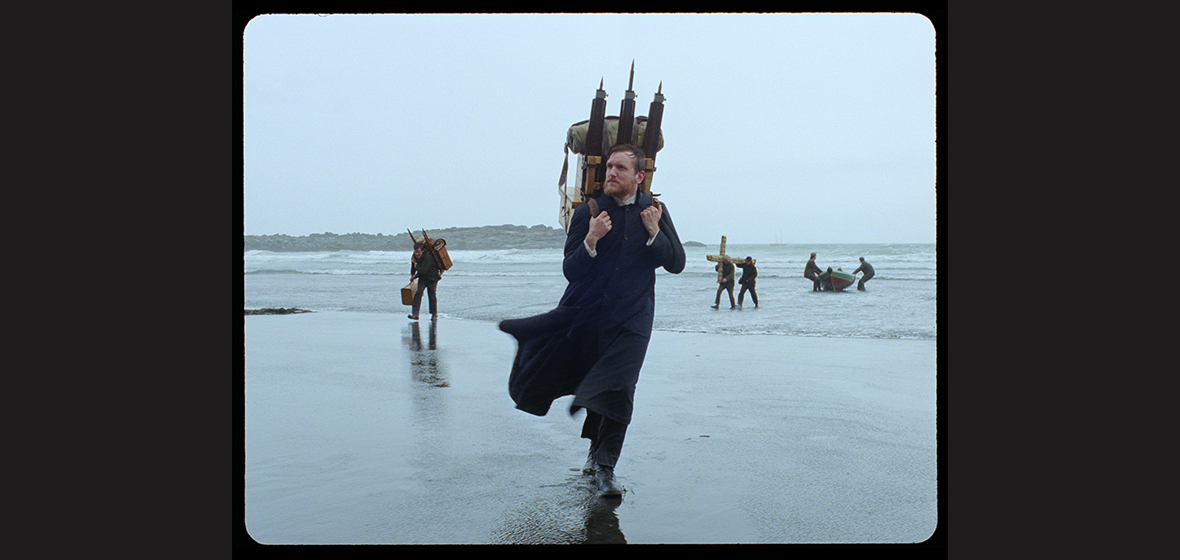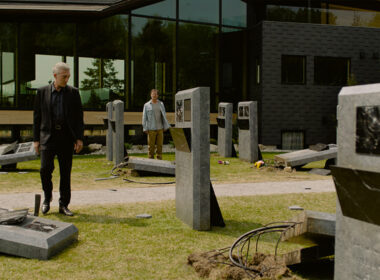In the 19th century, a young Danish priest named Lucas (Elliot Crosset Hove) was assigned to travel to a remote location in Iceland. Lucas is not the kind of man for hard labour and not one for harsh adventures, but he accepts the task as an opportunity to photograph the island. Lucas’ is more interested in the craft of photography than in his vows. With the help of a translator (Hilmar Guðjónsson), Lucas travels with a group of locals guided by Ragnar (Ingvar Sigurðsson). In every account, Ragnar is the opposite of Lucas – a product of that inhospitable landscape. He is rough, rugged, stoic and pragmatic. He does not respect Lucas but does not judge him either.
As expected from a story about priests on a mission in a cold and hostile place, the journey will test Lucas’ faith. But writer-director Hlynur Pálmason adds that his faith in God is as essential and brittle as his faith in humanity. Pálmason splits the film into two parts, divided halfway through by a death and consequent resurrection. Lucas and the crew cross the country in the first half, battling blizzards, turbulent rivers and mountains. The second half finds Lucas in the village overseeing the building of the church while trying to court Anna (Vic Carmen Sonne), the daughter of Carl (Jacob Lohmann), the local landowner who thinks little of the kind of man Lucas is – weak, too sentimental, not a real hard man like he believes his daughter deserves. In the first half, Lucas faces the wrath of God. In the second, he becomes the wrath of men.
This is Pálmason’s third feature. You may remember the review of his A White, White Day, which I considered one of the best films of 2020. He may be one of the most exciting voices in European cinema right now. More incisive about toxic masculinity than Thomas Vinterberg, I find his style close to what I wanted Jeremy Saulnier (Blue Ruin, Green Room) to be. Or to a young Scorsese. Brutal yet contemplative, he paces his films with the quiet demeanour of an experienced soul but rests his stories in thematic solid foundations. Godland is not that different from A White, White Day; both observe masculinity as a corrupting force, yet this time he looks at how insignificant and fragile it is against the unforgiving nature.
Pálmason works again with his usual cinematographer, Maria von Hauswolff, who films everything in 35mm to give the landscape a dramatic and epic feel. It is all framed in 4:3 where the edges are slightly darkened, adding an oppressive and terrifying touch to the image. There is a moment of peace when Lucas and the translator go out exploring to find the source of a waterfall. It feels like a descent into the most beautiful hellscape, like the two men are defying God to thread in place no human should be.
Godland is, for the second time in a row, an achievement for Pálmason. It’s unfair to compare it to Robert Eggers’ The Northman, as the other film about Danish people facing the hostile landscape of Iceland as a metaphor for the destructiveness of patriarchy and religious repression (albeit different religions). Still, the setting invites the comparison; on that front, Godland is a stronger film. The bleakness is starker, the environment more merciless. A chunk of lava slowly descending a mountain looks as gorgeous as a peaceful river and as threatening as a man insecure about his manhood.
Verdict: 4.5 out of 5
For anyone who loved The Mission, There Will Be Blood and the films of Terrence Malick.




